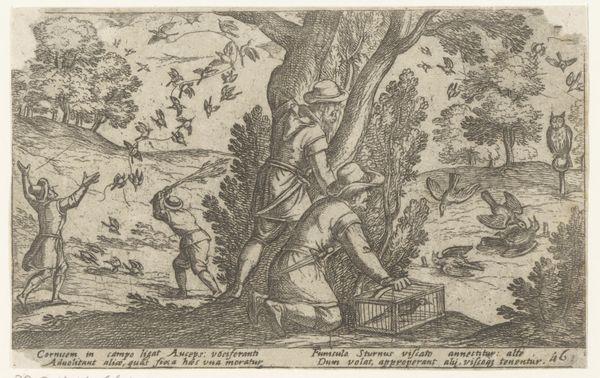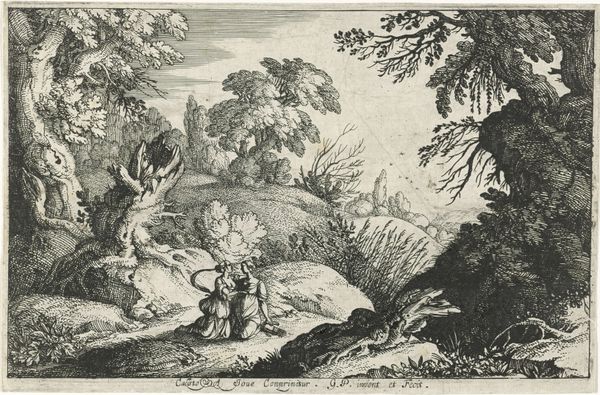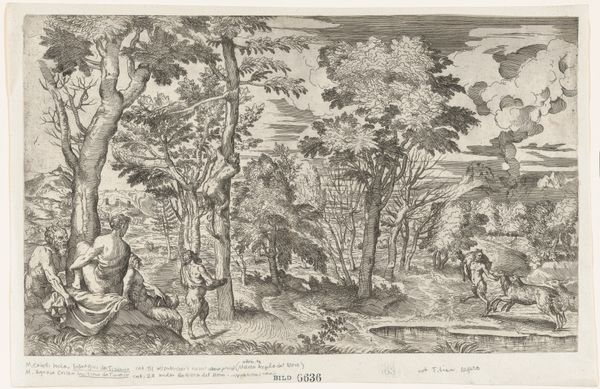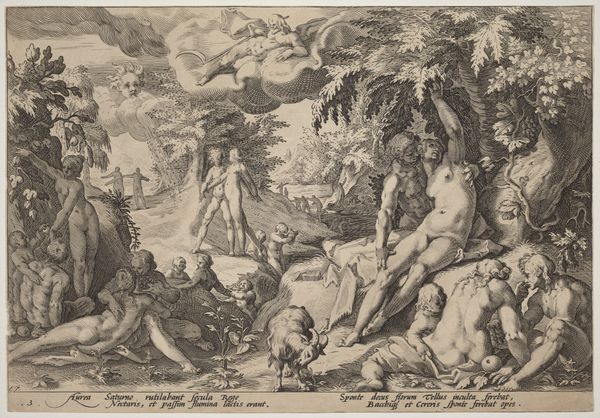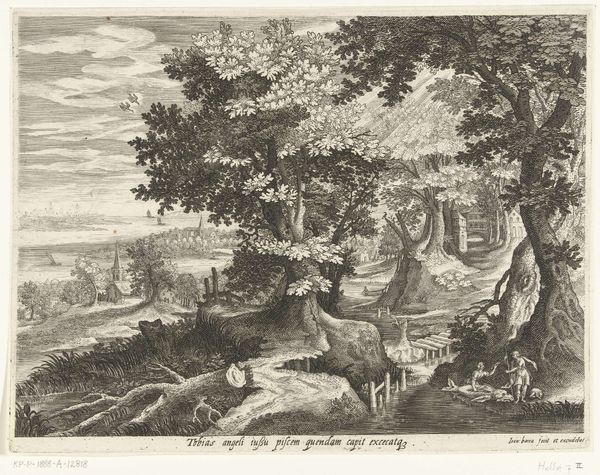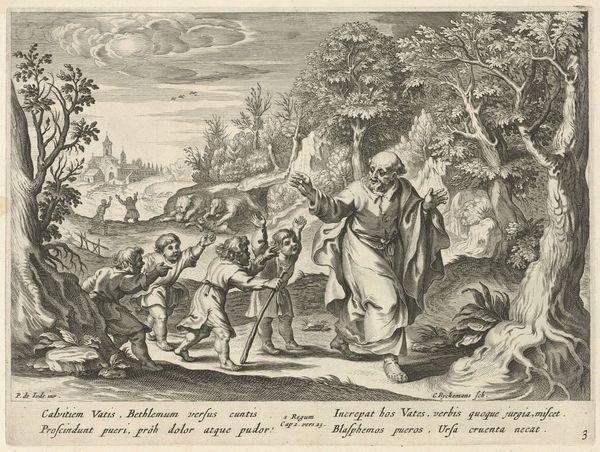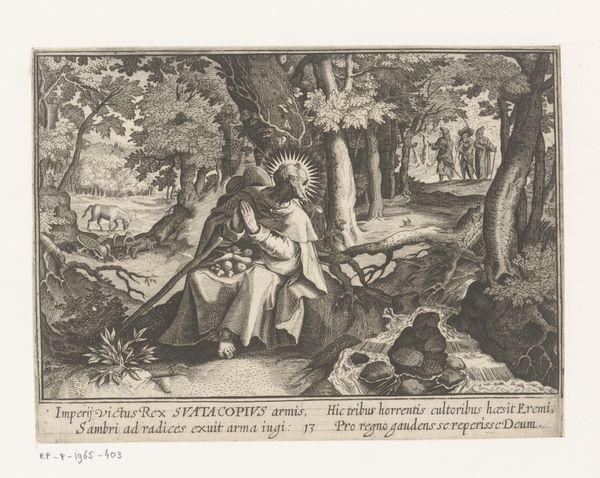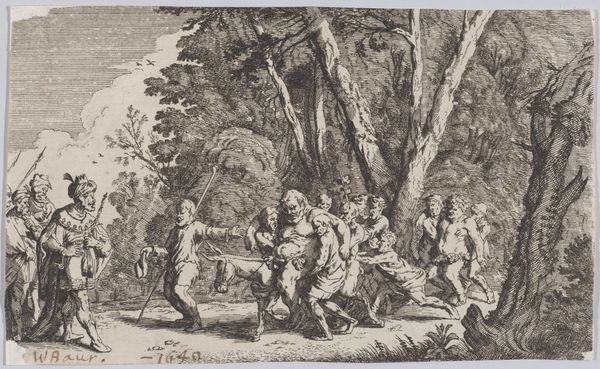
print, intaglio, engraving
#
baroque
# print
#
intaglio
#
landscape
#
figuration
#
history-painting
#
engraving
Dimensions: sheet: 6 7/8 x 9 7/8 in. (17.4 x 25.1 cm)
Copyright: Public Domain
Robert Willemsz de Baudous created this engraving, Mercury and Battus, sometime in the 17th century. It's an illustration of a story of greed and punishment taken from Ovid's Metamorphoses. The image creates meaning through its visual codes, cultural references, and historical associations. The scene takes place in a mythic, idealized landscape, typical of Dutch Golden Age art, a period marked by its burgeoning mercantile power. Mercury, the Roman god of commerce and communication, is shown here in disguise, testing the honesty of Battus, a shepherd. Battus betrays a confidence for gold and is turned to stone as punishment. This tale of deception and divine retribution may have served as a moral lesson in a society increasingly focused on trade and wealth. The print could have functioned as a form of social commentary. To understand this image better, scholars consult classical literature, period emblem books, and economic histories. Art is always contingent on its social and institutional context.
Comments
No comments
Be the first to comment and join the conversation on the ultimate creative platform.
